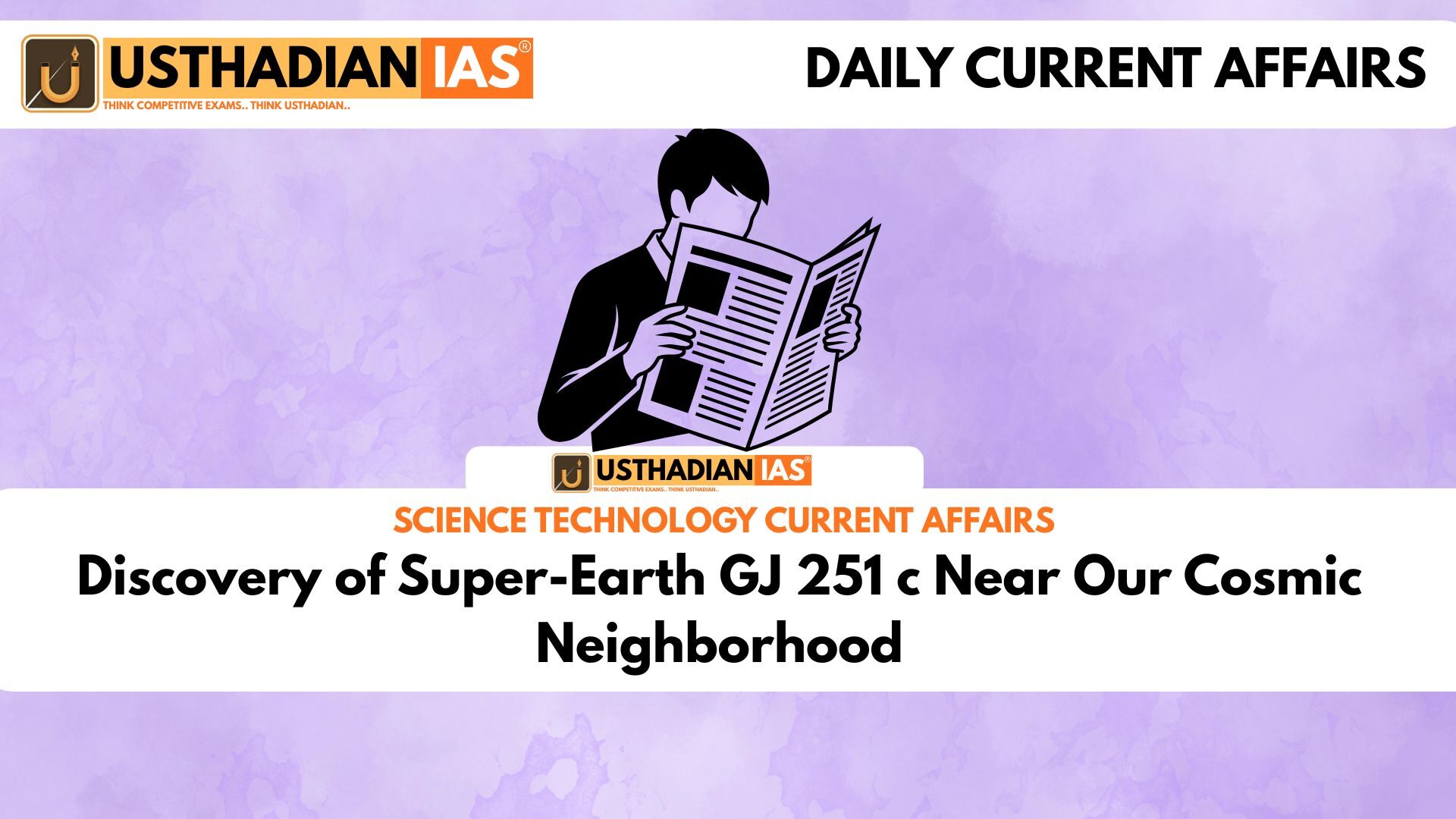Discovery and Significance
Discovery of Super-Earth GJ 251 c Near Our Cosmic Neighborhood: Astronomers have announced the discovery of GJ 251 c, a new super-Earth located just 20 light-years from Earth. The finding marks a major stride in the search for Earth-like exoplanets capable of supporting life. The research team, led by scientists from Penn State University, confirmed the planet’s detection using cutting-edge spectroscopic methods.
The discovery highlights how rapidly exoplanet science is advancing, allowing astronomers to identify smaller and more Earth-like planets in nearby star systems. Static GK fact: One light-year equals approximately 9.46 trillion kilometres — meaning GJ 251 c lies relatively close within our galactic neighbourhood.
What Makes GJ 251 c Unique
GJ 251 c falls into the category of super-Earths — planets larger than Earth but smaller than gas giants such as Neptune. Preliminary data indicates that it is about four times more massive than Earth, likely composed of rocky material. Its orbit lies within the habitable zone, often called the Goldilocks Zone, where conditions may allow liquid water to exist.
Static GK Tip: The concept of the Goldilocks Zone was introduced to describe regions around stars where temperatures are “just right” for liquid water — not too hot and not too cold.
The Technology Behind the Discovery
The breakthrough was made possible through the Habitable-Zone Planet Finder (HPF) — a high-precision near-infrared spectrograph mounted on the Hobby-Eberly Telescope at the McDonald Observatory in Texas. The HPF, developed at Penn State University, specializes in detecting small, rocky planets orbiting nearby cool stars.
This discovery stems from over two decades of precise starlight observation and spectral analysis, proving the importance of long-term scientific collaboration. Static GK fact: The Hobby-Eberly Telescope is one of the world’s largest optical telescopes, with a primary mirror measuring 10 meters in diameter.
Potential for Life and Future Studies
According to Suvrath Mahadevan, Verne M. Willaman Professor of Astronomy at Penn State, GJ 251 c is one of the most promising targets for atmospheric characterization. Its size and orbital distance make it ideal for detecting possible biosignatures, such as oxygen, methane, or water vapour — crucial clues in the search for life.
Upcoming space missions and advanced observatories, including the James Webb Space Telescope (JWST), may further investigate GJ 251 c’s atmosphere, surface temperature, and chemical composition. This discovery adds momentum to the broader effort to answer the age-old question: Are we alone in the universe?
Static GK Tip: The first confirmed exoplanet discovery was made in 1992 by astronomers Aleksander Wolszczan and Dale Frail — also at Penn State University.
Static Usthadian Current Affairs Table
Discovery of Super-Earth GJ 251 c Near Our Cosmic Neighborhood:
| Topic | Detail |
| Name of Exoplanet | GJ 251 c |
| Distance from Earth | Approximately 20 light-years |
| Type of Planet | Super-Earth (rocky composition) |
| Mass | About 4 times Earth’s mass |
| Discovery Instrument | Habitable-Zone Planet Finder (HPF) |
| Observatory | McDonald Observatory, Texas |
| Key Institution | Penn State University |
| Research Publication | The Astronomical Journal (October 23, 2025) |
| Discovery Lead Scientist | Suvrath Mahadevan |
| Potential for Life | Located in habitable (Goldilocks) zone |








